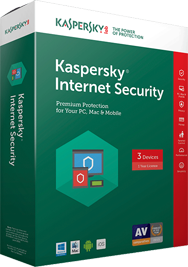|
Home
Articles
Reviews
Table of Contents
Search
Staff
| |
Technology Today - May 2017 Backing Up Your Computers
By Robert Sanborn
I have a small network in my office and have for years used the traditional network attached storage (NAS) device to back things up and they work quite well for the most part. But they can be expensive. Not only do you shell out a few hundred dollars for the device, but the software often attached for using to back up your computers has been spotty at best and the fact that you have to buy four identical hard drives to create the RAID Backup in the drive can be costly as well. I am not sure of the exact mathematics but the drift I get is that four hard drives are nearly four times as likely to fail as a single drive. Does that mean I will probably have to buy a new hard drive each year? That adds to the expense. Now the advantage of a RAID (redundant array of inexpensive drives) is the data is actually spread across all the drives so that that if one drive fails, just replace the drive and you are good to go, the system rebuilds the data. In my experience over the past quite a few years is that process works quite well. Every once in a while something hiccups so I have to turn off the NAS box and back on and things are back to normal but after five years or so, you probably should think about replacing it and I am currently looking for a new NAS backup unit for just that reason. |
If you are distrustful of cloud based storage, an option would be to have a two drive NAS box. If you have a box that has only two drives in it, the way it works is that the data is simultaneously written to the second drive (mirror or RAID 1) as the first so if a drive fails, again, replace it and the contents is copied back to the first drive. This way, you know everything is backed up and duplicated on the drive. In fact, many office quality desktop computers and mainboards have this option built into the system and I know a number of people that have two hard drives installed inside their computers to do this kind of backup. The good news is that the backups are very stable and accurate but the bad news is that if you get a virus/malware/ransomware attack that corrupts the hard drive, then both drives get corrupted at the same time and your backup is worthless. For that reason alone, I would recommend an external unit. |
So for your home computer, that leaves you with yet another approach and that is the external USB or cloud attached storage device. Usually, it is a drive enclosed in a case that attaches to your computer via a usb connection. And there are several out there worth taking a look at from big drive makers like Western Digital and Seagate. For backing up important files, these do an excellent job with the exception that you often need to be sure that it is backing up what you want backed up. Unless you specifically state so, both systems will back up what they think are important files from your computer and are usually not intended for restoring your computer in the event of a major failure. And that is not necessarily a bad idea. By now, most people that have tinkered with computers long enough have discovered that installing an older working hard drive into a new computer doesn’t work very well because of the problem with Windows not recognizing the new hardware and not handling things very well. So by the time you need that system restoration, you may be beyond the ability to replace the computer with an identical model. In fact, the devices could be different brands and generations. |
So this leaves you with using different back up technologies depending on how you need to have things backed up. The first step of course is to have a network security package on your desktop computer that keep malware, viruses, Trojans, and ransomware packages out of your computer. My current favorite for the past three years now is Kaspersky Internet Security. |

|
|

|
My other solution is to get a stand alone backup software package and I think I have found one in Acronis True Image New Generation. For the last three years, I have given up on the backup packages that come with both the NAS devices and Windows, and looked for options that not only work but give me peace of mind that they are working. With this new release of Acronis True Image 2017, I think I have found it. I need something that is safe, reliable, works well, and keeps me and my data comfortably secure. I will let you know how it goes.
|
|
|
More later. |
Robert Sanborn
robert@pcll.com |
